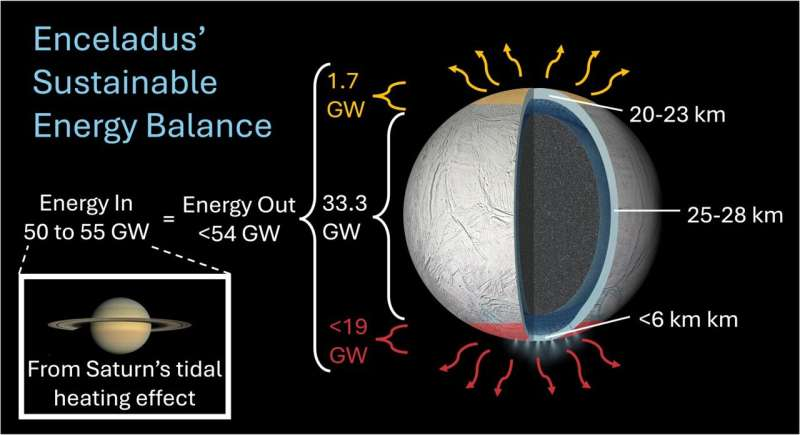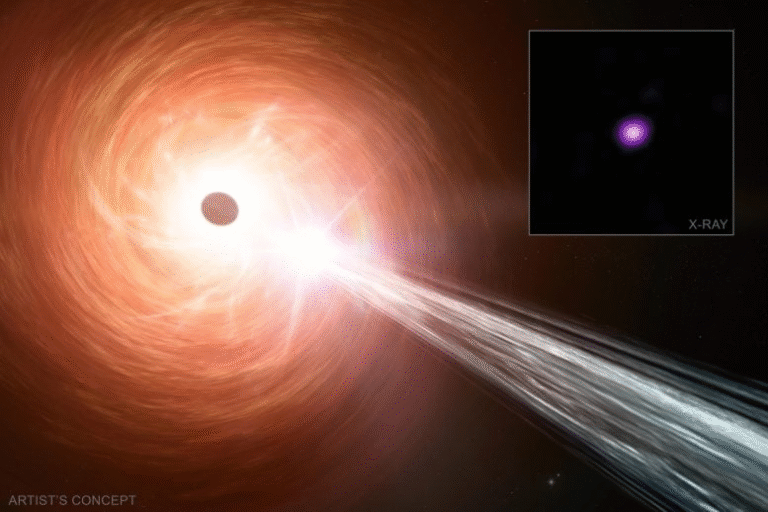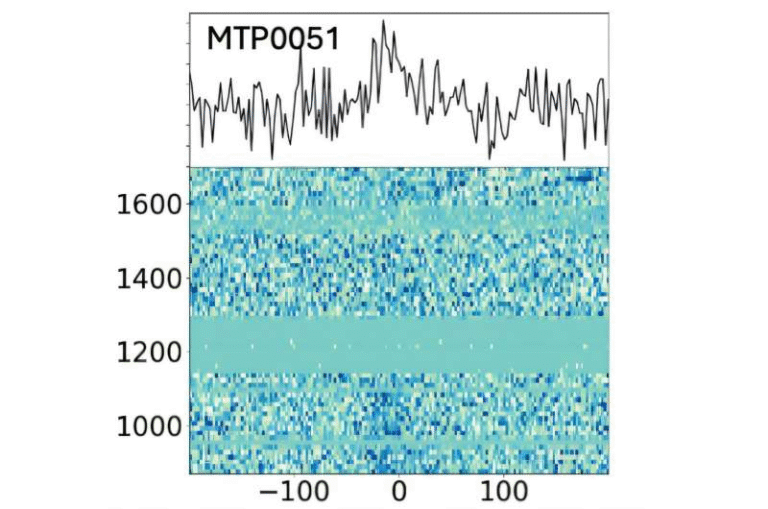New Evidence Shows Saturn’s Moon Enceladus May Have a Long-Lived Ocean Capable of Supporting Life

Saturn’s icy moon Enceladus has once again amazed scientists, thanks to a new study that uncovers strong evidence of global heat flow—not just at its famously active south pole, but also at its long-quiet north pole. This discovery matters for one big reason: it suggests Enceladus’s subsurface global ocean might be stable over extremely long timescales, potentially creating conditions that are friendly for life. The research, led by a team from the University of Oxford, the Southwest Research Institute, and the Planetary Science Institute, was published in Science Advances on November 7, 2025.
Below is a clear and detailed walkthrough of the findings, the science behind them, and the bigger picture of why Enceladus is one of the most fascinating worlds in our entire Solar System.
Heat Emerges From Both Poles, Not Just One
Until now, scientists had only measured significant heat loss at Enceladus’s south pole, where massive plumes of water vapor and ice regularly erupt from the so-called tiger stripe fractures. These eruptions, discovered by NASA’s Cassini spacecraft, are powered by internal heat moving upward from a global ocean beneath the icy shell.
However, the north pole had long been considered geologically quiet. This new research overturns that assumption.
Using Cassini’s Composite InfraRed Spectrometer (CIRS), the team compared temperature data from deep winter in 2005 and summer in 2015 at the north pole. By modeling how cold the surface should be if only external factors (like sunlight) were heating it, the researchers noticed something surprising: the surface was around 7 K warmer than expected. That small but crucial temperature difference could only be explained by heat leaking upward from the subsurface ocean.
The measured heat flow at the north pole is 46 ± 4 milliwatts per square meter. This number may look tiny, but for an icy moon only 500 kilometers across, it is a major indicator of strong internal activity.
Total Heat Loss Aligns With Predicted Tidal Heating
By combining the new north-pole measurements with known heating at the south pole, the researchers estimate that Enceladus’s total global heat loss is up to 54 gigawatts. This fits remarkably well with the predicted 50 to 55 gigawatts generated by tidal heating, the process where Saturn’s gravity stretches and squeezes the moon, creating frictional heat deep below the surface.
In other words, the amount of heat leaking out of the moon matches the amount of heat being generated inside it. This is important because it shows Enceladus is not cooling too quickly or heating too rapidly—it’s in a kind of long-term balance that can keep its ocean liquid over geological timescales.
A stable, long-lasting ocean is one of the most essential ingredients for habitability. Enceladus already ticks other important boxes, such as having liquid water, heat, and complex organic molecules, including phosphorus, detected in plume material by Cassini.
What This Means for Possible Life
Scientists view Enceladus as one of the most promising places to search for life beyond Earth. The moon has:
- Liquid water, likely salty and global
- Active hydrothermal processes, suggested by plume chemistry
- Organics, including complex hydrocarbons
- Energy sources, now confirmed to be stable across the whole moon
The new study strengthens Enceladus’s case even further. If an ocean is stable over millions of years, it has time to develop the kinds of chemical gradients and environments that microbial life could potentially use.
However, there are still open questions. One of the biggest is the age of the ocean. Scientists do not yet know when it formed or how long it has existed. A stable ocean today is promising, but researchers still need to determine whether it has been around long enough for life to realistically emerge.
Ice Shell Thickness Estimates Refined
The study did more than measure heat. It also used thermal data to make independent estimates of ice shell thickness without relying on gravity or libration measurements.
The findings show that the ice shell is:
- 20–23 km thick at the north pole
- 25–28 km thick on average globally
These values are slightly higher than some earlier estimates but still indicate an ocean that is reachable with the right future mission technology.
Understanding the thickness of the ice is essential for planning missions that hope to probe or sample the ocean directly, either by landing on the surface or eventually deploying a submersible probe through the ice.
Why Cassini’s Old Data Is Still So Valuable
One of the most impressive aspects of the study is that it relies on data collected nearly a decade ago. Yet the insights extracted now were not possible at the time because scientists needed long-term seasonal comparisons. Cassini’s mission—extended multiple times—provided just enough data over enough years to capture the seasonal differences crucial to making these new measurements.
This highlights a major point emphasized by the researchers: long-duration missions are extremely valuable, especially for icy moons whose seasonal cycles can take years or decades.
A Closer Look at Tidal Heating
Since tidal heating is the driving force behind Enceladus’s internal activity, here’s a straightforward explanation of how it works.
Enceladus orbits Saturn in a slightly elliptical path, meaning it moves closer to and farther from the planet during each orbit. Saturn’s massive gravity pulls harder when Enceladus is closer and slightly less when it is farther away. This constant squeezing and releasing creates internal friction. That friction produces heat, similar to bending a metal wire back and forth until it gets warm.
Enceladus is also in a gravitational resonance with the moon Dione, which helps maintain its eccentric orbit and sustain tidal heating.
This internal heat keeps the subsurface ocean from freezing solid and powers the plumes that escape into space.
Why Enceladus Is a Prime Target for Future Missions
Enceladus is considered a top target for astrobiology because:
- It has a global ocean, not just a regional one.
- Its ocean is in contact with rock, enabling hydrothermal reactions.
- It is actively venting its ocean into space through plumes, making sampling far easier than drilling through kilometers of ice.
- The new findings strongly indicate long-term energy stability.
Future missions could:
- Fly through the plumes again with more advanced instruments
- Land and collect pristine ice samples
- Use radar to map the ice thickness globally
- Eventually send a melt probe or submarine into the ocean
The new study provides essential data that mission planners will use to design landers or ocean-penetrating systems safely and effectively.
Additional Background: How Enceladus Compares to Other Ocean Worlds
Enceladus isn’t the only ocean world in our Solar System, but it stands out in some compelling ways.
Europa (Jupiter’s moon):
- Also has a global ocean
- Has strong tidal heating
- Has a thick ice shell (possibly thicker than Enceladus’s)
- Surface radiation levels are extremely high
Titan (Saturn’s moon):
- Has a subsurface ocean too
- But its thick atmosphere and slower internal processes make sampling harder
Triton (Neptune’s moon):
- Likely has an ocean but is very distant and frigid
Enceladus remains uniquely accessible because it actively ejects ocean material into space, meaning future spacecraft don’t need to drill at all—they can simply fly through the plume.
Research Paper
Endogenic heat at Enceladus’ north pole – Science Advances (2025)
https://www.science.org/doi/10.1126/sciadv.adx4338




